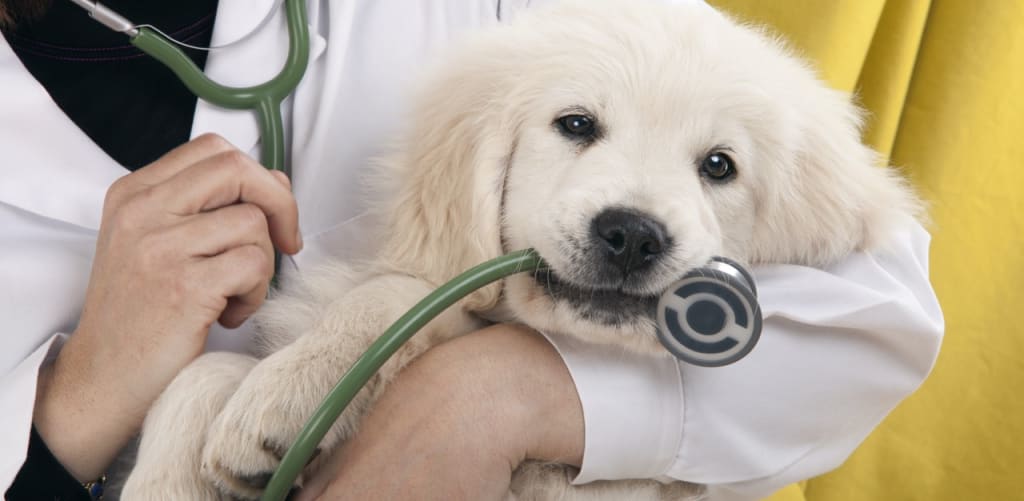Checklist Use During Pet Wellness Visits
Pet Wellness

It is essential to stay on top of your pet's health by getting thorough annual wellness exams and routine vaccinations. A pet wellness exam is key to your pet's good health. Preventative care can protect your pet from illnesses and diseases, as well as catch any pending illnesses before they become more serious.
Routine Wellness Visits
In 2018, $18 billion was spent on vet care alone. When it's time to take your pet to the veterinarian's for their annual or semi-annual wellness visit, there are several things you can expect from your veterinarian. During the visit, they will ask you questions about the overall health of your pet, if there has been any behavior changes or changes in their eating habits. They will then examine your pet thoroughly from your pet's whiskers to the tip of their tail. Following is a list of some of the things you can expect your veterinarian to check during your pet’s wellness visit.
Weight
Your pet's weight is a vital factor in their overall health. 1 out of 3 cats and dogs in the U.S. is overweight. Your veterinarian will weigh your pet, making sure that your pet is at a healthy weight. An overweight pet is more at risk of developing diabetes, heart problems, and arthritis. If necessary, they will discuss with you whether any exercise or dietary changes need to take place.
Eyes
Your pet's eye health is crucial. Your veterinarian will look for early signs of infection, glaucoma, as well as haziness on the surface of the cornea indicating oncoming cataracts. Dry eye can cause several other issues, including cornea wounds, if something gets in your pet's eye, and there's not adequate moisture to wash it away.
Ears
Your pet's ears are full of pain-sensing nerves. Even a small infection could cause your pet severe ear pain. Your veterinarian will check your pet's ears for excessive wax buildup, as well as allergy symptoms, ear mites, and skin discolorations that might indicate an infection. Otitis externa is the inflammation of the outer ear canal and is in the top 10 diagnoses for both dogs and cats.
Mouth
Oral hygiene is a significant indicator of your pet's overall health. The most common disease in dogs and cats continues to be dental disease, affecting 68 percent of cats and 76 percent of dogs. Your veterinarian will check your pet's mouth, looking for signs of oral disease and excessive tartar buildup along the gum line. With routine dental exams and teeth cleanings, serious dental disorders can often be avoided. Your veterinarian will thoroughly examine your pet's gums and teeth. They will check for tartar buildup, inflammation, loose teeth, infection, and any teething problems.
Skin and Coat
Your veterinarian will check your pet's skin and coat, looking for skin infections, hot spots, and flea allergy dermatitis, as well as skin fold dermatitis. Over the past ten years, there has been a 30.7% increase in environmental allergy cases in dogs and an 11.5% increase in cats.
They will also check for fleas and parasites such as ringworm and mange-causing scabies. Your veterinarian will probably discuss different methods of flea and tick prevention.
Heart
Congenital (due to genetics) and acquired (due to age and lifestyle) heart diseases can cause various abnormalities in your pet. If left untreated, heart disease can lead to heart failure in your pet. Your veterinarian will check to make sure that the heartbeat is standard, as well as your pet's breathing. The prevalence of heartworm disease in dogs has decreased 42% over the past decade due to increased heartworm prevention.
Abdomen
During the visit, your veterinarian will check your pet's abdomen, checking the internal organs, and looking for things such as bladder stones. Internal parasites are more common in large breed dogs compared to small breed dogs. It could be due to larger dogs having a more active outdoor lifestyle than smaller breed dogs.
Routine Wellness Labs
You can expect routine fecal testing for GI parasites, testing for canine heartworm and tick-borne diseases, as well as feline leukemia & FIV antiviral testing. If necessary, they might check your pet's chemistry profile, do a complete blood count, check your pet's electrolyte levels, and do a urinalysis.
Spaying and Neutering
Just one female dog and her puppies can result in 67,000 dogs in six years, and one female cat and her kittens can lead to 370,000 cats being born in seven years.
Over six years, one female dog and her puppies can result in 67,000 dogs. Likewise, over seven years, a female cat and her kittens can lead to 370,000 cats being born. Not only does spaying and neutering your pet prevent unwanted litters and help keep animal overpopulation down, but it can also save your pet from various diseases down the road if you spay or neuter them early enough. Some such diseases are uterine infections and cancers. Spaying and neutering can also result in better behavior in your pet, as well.
Vaccinations
Vaccinations are a proven method of preventing the contraction and spreading of several highly contagious, life-threatening diseases in both pets and people. These diseases can be contracted from other pets, wild animals, or exposure to parasites. Your veterinarian will determine which vaccines are best for your pet based on regional and individual pet risks.
Geriatric Care
As pets get older, their healthcare needs change. Once pets reach the age of seven, they are considered seniors. Their immune systems weaken, and they become more susceptible to contagious diseases. Chronic age-related illnesses become more of a risk the older they get. Your pet needs to be monitored for arthritis, diabetes, glaucoma, and blood pressure changes regularly as they get older.
Additional Concerns
Your veterinarian might discuss additional lab tests and screenings for certain types of illnesses or diseases they might be at risk of developing depending on your pet's age, condition, and breed. Early diagnosis of any developing medical condition is essential to the treatment and protection of your pet from any discomfort or pain they might experience.
Conclusion
An ounce of prevention is worth a pound of cure. Preventative care for your pet should be one of your top priorities. It doesn't have to be inconvenient. Many veterinarian's offices now offer automated SMS alerts to remind you of appointments and to notify you of lab results. Routine pet wellness visits will help your furry loved ones live healthy and happy lives for as long as possible.
About the Creator
Enjoyed the story? Support the Creator.
Subscribe for free to receive all their stories in your feed. You could also pledge your support or give them a one-off tip, letting them know you appreciate their work.





Comments
There are no comments for this story
Be the first to respond and start the conversation.